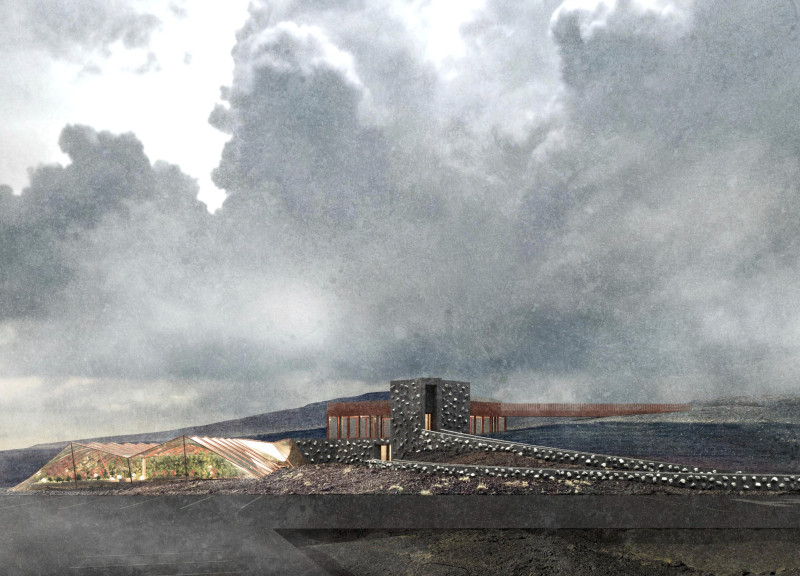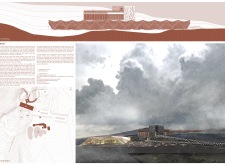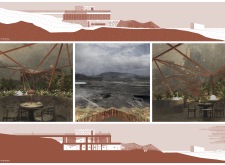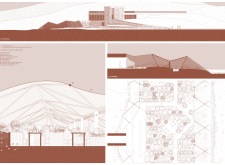5 key facts about this project
The Greenhouse Restaurant is located at the base of Hverfjall Volcano, designed to blend with the natural environment while providing a dining experience. It consists of two main volumes: a long, narrow greenhouse and a square support building. The overall design focuses on maximizing sunlight and offering views of the surrounding landscape, creating a comfortable place for guests.
Design Concept
The arrangement of the two volumes is set at a 45-degree angle to each other. This orientation helps reduce shading on the greenhouse and also strengthens the visual connection between the multipurpose hall and Hverfjall Volcano. The design takes advantage of the site’s natural features and enhances both light and sightlines, allowing visitors to enjoy the unique landscape.
Accessibility Features
The design prioritizes accessibility for all visitors. The support building is created to allow easy movement across multiple levels while respecting the existing landscape. Ramps lead guests to the main entrance on the ground floor as well as to the multipurpose hall above. A bridge connects to the roof terrace, providing direct access for hikers and ensuring a strong connection to the outdoor setting.
Sustainable Climate Control
Sustainability is a key aspect of the restaurant’s operation. The greenhouse is designed to keep air volume low, which is important for managing temperature and humidity effectively. Circulation routes are integrated into the landscape, resulting in a lower roof height that fosters a closer relationship with the plants. Concrete retaining walls help define circulation paths and planting spaces, creating opportunities for visitors to interact with the greenery.
Material Considerations
Material choices are essential for both performance and visual effect. The structure supporting the ETFE roof features a lightweight metal framework designed to minimize ground disturbance through the use of pier foundations. The support building is constructed with in-situ reinforced concrete, selected for its durability and compatibility with the terrain.
The design incorporates practical features, such as rainwater collection systems placed under the planting areas, which gather water from the roofs. This promotes efficient water management, supporting the overall sustainability of the restaurant.






















































